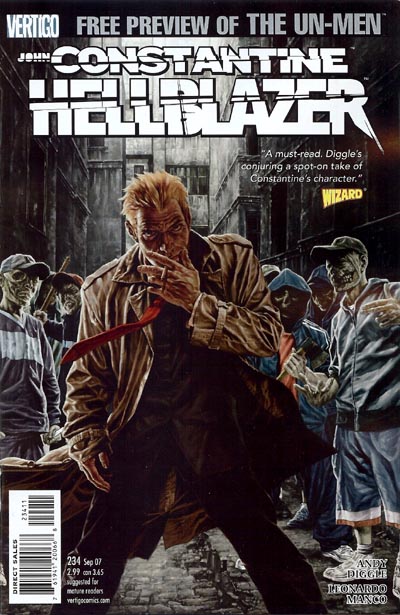In the late 1990s, two quite divergent Iranian films were recognized on the Western stage. During the 1999 Academy Awards, Majid Majidi’s Children of Heaven, a touching Satyajit Ray-like neorealist drama about a pair of siblings searching for lost shoes, became the first Iranian film nominated for an Academy Award for Best Foreign Language Film. Two years earlier, in May 1997, Abbas Kiarostami’s minimalist exercise Taste of Cherrywon the Palme d’Or at Cannes, the first Iranian film to do so. By the tail end of the twentieth century, Iran had made its way onto the stage of world-renowned arthouse filmmaking. While other cinematically underrepresented nations have oscillated in and out of prominence as the place where great new movies are being pioneered (South Korea, Romania), Iran has consistently, albeit quietly, given the West a limited but incredible output of challenging and innovative films.
Consuming international arthouse cinema is, in some ways, an essentially reductive and problematic venture, for such a practice often involves categorizing an entire country based on their cinematic output, and understanding that cinematic output exclusively by what has been exported. Arthouse films that export well often don’t play an active role in their home nation’s cinematic culture, like Portugese filmmaker Pedro Costa’s barebones studies of slum life, which are virtually absent in his home nation and have found an audience internationally despite the paradox of the cultural specificity of his films. Secondly, the films that ultimately export out of a country make up only a fraction of that country’s cinematic output; thus, it’s rather misleading to say that Christi Puiu and Christian Mungiu represent “Romanian cinema” or Kim Ki-duk and Lee Chang-dong represent “South Korean cinema” in any definitive way.
So, when I make the observation that Iran is making interesting and compelling work that speaks particularly well to this global moment, I am speaking, of course, about what is visible to Western spectators like myself, an exposure that is, in of itself, profoundly informed by global politics. In talking about “Iranian cinema,” I do not pretend to be any sort of expert on Iranian culture (cinematically or otherwise) nor do I desire to coin a “movement” (which is always an essentially meaningless exercise of applying meaning), but merely to recognize the notable increase in the export of interesting films whose content suggest not a push towards establishing a recognizable “national cinema,” but speak to the world about cinema in a way that only a nation like Iran can right now.
The importance of Iran’s world visibility is certainly not lost on Iranians. Here’s the speech by A Separationfilmmaker Asghar Farahi upon accepting the Best Foreign Language Film award at the Oscars two weeks back (and one of the best moments of the night):
“At this time, many Iranians all over the world are watching us and I imagine them to be very happy. They are happy not just because of an important award or a film or filmmaker, but because at the time when talk of war, intimidation, and aggression is exchanged between politicians, the name of their country Iran is spoken here through her glorious culture, a rich and ancient culture that has been hidden under the heavy dust of politics. I proudly offer this award to the people of my country, a people who respect all cultures and civilizations and despise hostility and resentment.”
For Westerners, the visibility of a film like A Separation represents the de-dusting of Iran’s cultural output, a moment that reminds or informs one of the fact that the nation has been making interesting films for decades now (some of which, thinks to a growing interest in Kiarostami and Mishen Makhmalbaf, are making their way into Western DVD players for the first time ever). Farahi’s speech speaks uniquely to the importance of art cinema not only as a forum for exhibiting films that have greater aspirations than the mainstream, but as a communication medium used to transmit messages which would otherwise be lost in translation. This is a unique moment. While GOP frontrunners compete over who would declare war on Iran soonest after entering office (Happy Super Tuesday, btw), a filmmaker accepting an award for making a truly outstanding domestic drama speaks to an investment in culture as the most honorable of ventures that erases even the possibility of hostility and resentment. We may not all speak Persian, but cinema can be a language that’s easy to translate.
The emphasis Farahi makes here is a nuanced but essential one: the honor here lies not the power of storytelling or the potential of the medium of film, but culture as an expression of identity. Farahi’s use of the word “culture” here does not seem to denote culturally specificity or exclusivity – he celebrates A Separation’s transportability as much as he honors Iran’s legacy of artisanship – but rather a shared investment in culture that can become borderless (and Farahi is, of course, distinguishing the Iranian people from its political megaphone-spokespeople, who, it should be noted, quickly reappropriated his speech).
As Iranian cinema grows in visibility, I’m reminded of a transportable text from another medium: Azar Nafisi’s 2003 memoir Reading Lolita in Tehran, which provides a reminder that the act of consuming culture itself can be a great political minefield in Iran. This Iranian perspective, then, travels with a sense of urgency surrounding works of art that knows little comparison in Western experience. In the opening pages of Lolita, Nafisi shares with the reader a warning that she gave the women in her book club:
“do not, under any circumstances, belittle a work of fiction by trying to turn it into a carbon copy of real life; what we search for in fiction is not so much reality but the epiphany of truth.”
Arthouse films that have emerged from countries that have been marginalized on the world stage have often been categorized as “neo-realist,” or films that attempt to say something about the everyday struggles of a nation’s people. This moniker has been applied across the board, from Vittorio de Sica’s Bicycle Thieves (1948) to Ray’s Pather Panchali (1955) and even to recent Romanian cinema like Puiu’s The Death of Mr. Lazarescu. Majidi’s Children of Heaven seems to fit this moniker comfortably, but it does not characterize what Iran has exported since, films which bears a much closer affinity and lineage to Taste of Cherry. A Separation may be deemed realist, but in the Mike Leigh (not the de Sica) tradition. Iranian cinema has engaged in a fascinating meta-reflexive mode, like Kiarostami’s work (including his non-Iranian Certified Copy) and, of course, Jafar Panahi’s recently-released This Is Not a Film. Rather than using cinema to depict “real life,” Iranian cinema has instead used the medium to search for the epiphany of truth. Iranian filmmakers have chosen to speak to a global audience about cinema in order to speak to a global audience about Iran.
Iran is perhaps one of few countries with a prolific cinematic output for whom filmmaking – and, as Lolitaillustrates, cultural production and consumption at large – can be a dangerous and potentially subversive activity. In an era where it seems evermore difficult to find cinema that dares to say anything new, filmmakers like Panahi risk their lives to use cinema to say anything at all. Panahi, who was banned from filmmaking, shot this non-film in which he describes a film he would like to make, and the result – This Is Not a Film – was miraculously smuggled to the Cannes Film Festival in a birthday cake, and is now in limited release in the US.
Farahi and Panahi, by situating their works as products of cultural and individual expression, highlight the importance of the production of culture as a powerful act in of itself. The very act of making a movie or reading a book or seeing/exporting a movie carries a profound political weight on its own, one that transcends the particular political discourse of a given moment. These aren’t meta-exercises for their own sake. They are essential reminders that the epiphany of truth exists as much in the act of reading as it does in the content of the book.












No comments:
Post a Comment